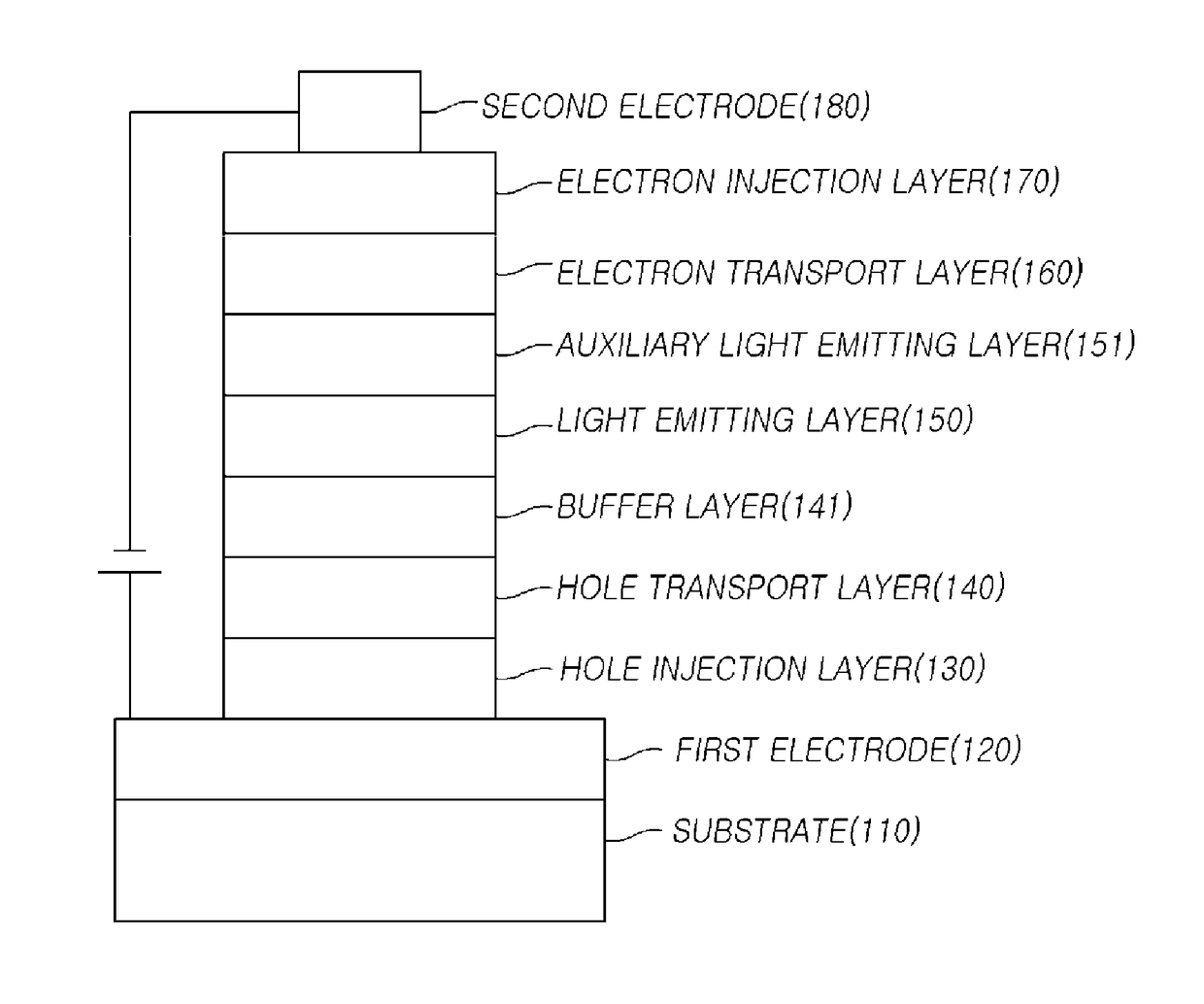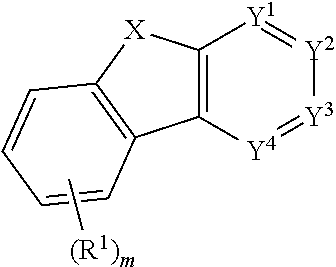Compound for organic electronic element, and organic electronic element and electronic device using same
- Summary
- Abstract
- Description
- Claims
- Application Information
AI Technical Summary
Benefits of technology
Problems solved by technology
Method used
Image
Examples
synthesis embodiment 1-1
1. Synthesis Embodiment 1-1
[0146]
[0147]Sub 1A-1 (5.45 g, 18.4 mmol) obtained in the above synthesis was dissolved in THF in a round-bottom flask, and then Sub 2-1 (7.99 g, 18.4 mmol), Pd(PPh3)4 (0.85 g, 0.7 mmol), NaOH (2.2 g, 55.1 mmol), and water were added, followed by stirring at 75□. Upon completion of the reaction, the reaction product was extracted with CH2Cl2 and water. The organic layer was dried over MgSO4 and concentrated, and then the compound obtained was subjected to a silica gel column and recrystallization to give a product 7.43 g (yield: 71%).
synthesis embodiment 1-25
2. Synthesis Embodiment 1-25
[0148]
[0149]In addition to Sub 1A-1 (4.04 g, 13.6 mmol) obtained from the synthesis above, Sub 2-42 (7.98 g, 13.6 mmol), Pd(PPh3)4 (0.63 g, 0.5 mmol), NaOH (1.63 g, 40.8 mmol), THF, and water were used under the method of synthesis 1-1 to give a product 6.77 g (yield: 69%).
synthesis embodiment 1-43
3. Synthesis Embodiment 1-43
[0150]
[0151]In addition to Sub 1A-1 (4.7 g, 15.8 mmol) obtained from the synthesis above, Sub 2-88 (8.05 g, 15.8 mmol), Pd(PPh3)4 (0.73 g, 0.6 mmol), NaOH (1.9 g, 47.5 mmol), THF, and water were used under the method of synthesis 1-1 to give a product 6.82 g (yield: 67%).
PUM
 Login to View More
Login to View More Abstract
Description
Claims
Application Information
 Login to View More
Login to View More - R&D
- Intellectual Property
- Life Sciences
- Materials
- Tech Scout
- Unparalleled Data Quality
- Higher Quality Content
- 60% Fewer Hallucinations
Browse by: Latest US Patents, China's latest patents, Technical Efficacy Thesaurus, Application Domain, Technology Topic, Popular Technical Reports.
© 2025 PatSnap. All rights reserved.Legal|Privacy policy|Modern Slavery Act Transparency Statement|Sitemap|About US| Contact US: help@patsnap.com



